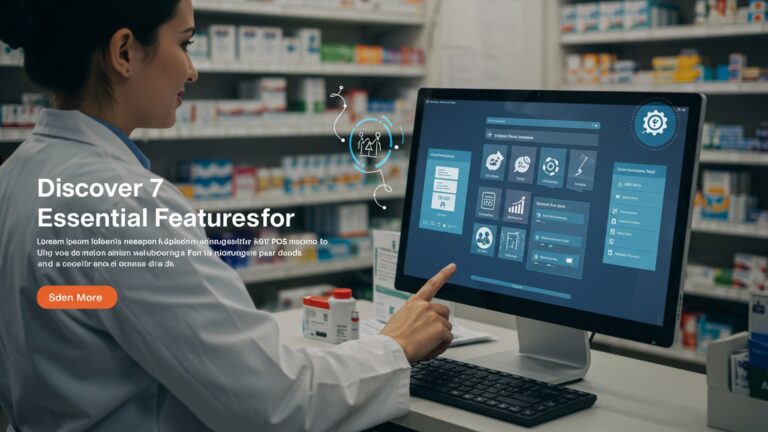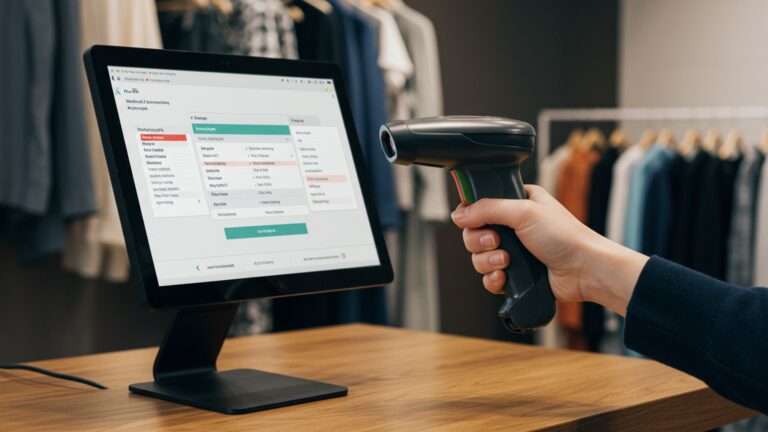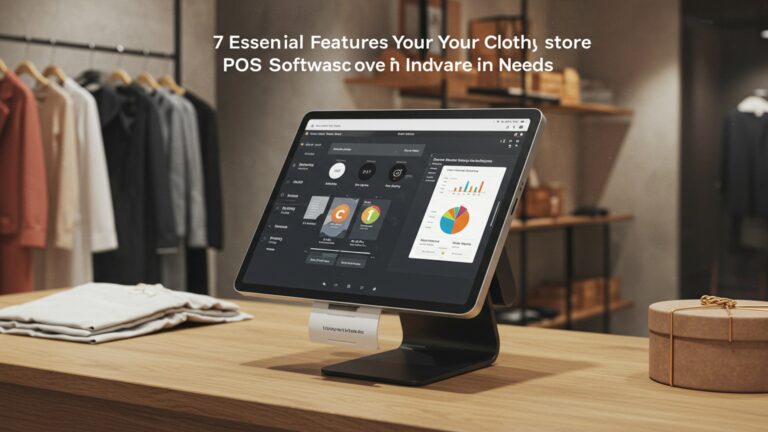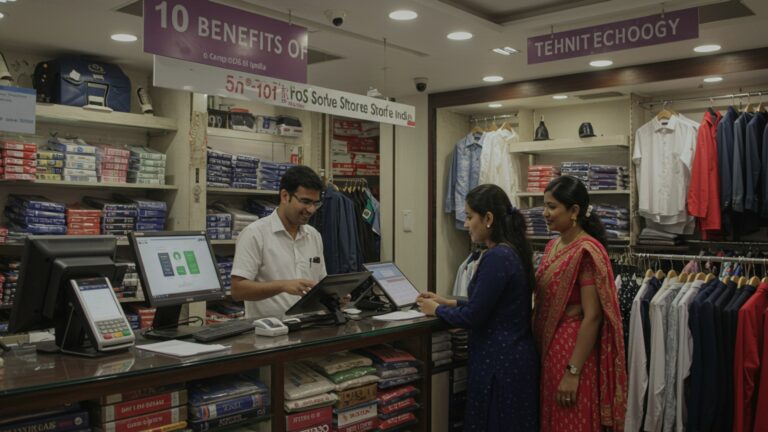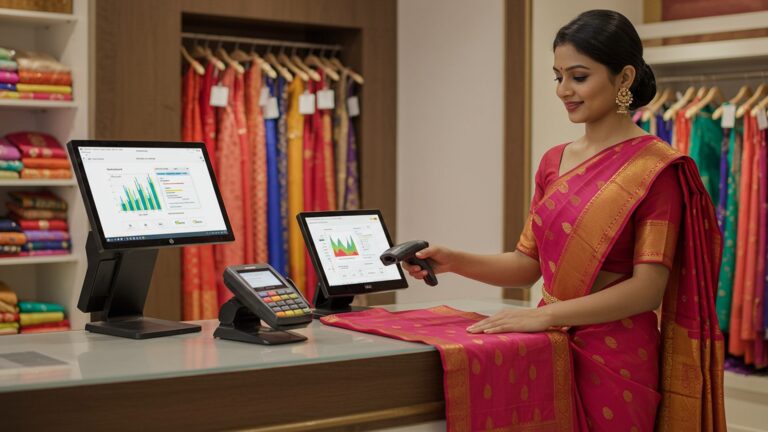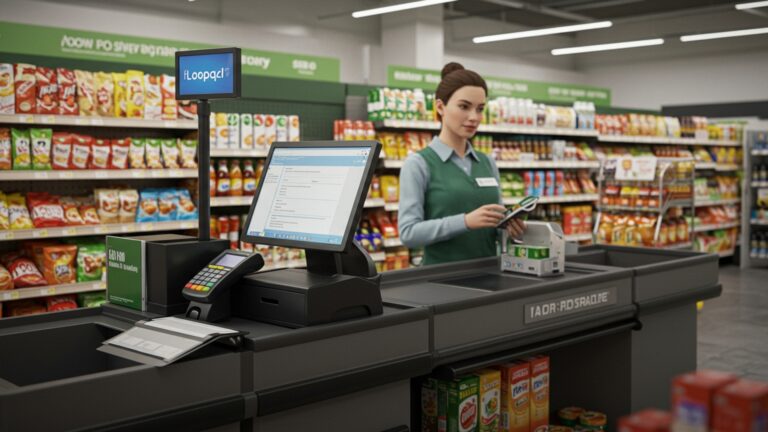Master Apparel Store Billing 6 Features Your Software Must Have
In today’s dynamic retail landscape, an effective apparel store billing software is no longer just a checkout tool but a critical strategic asset. As consumers demand seamless experiences across online and brick-and-mortar channels, your system must effortlessly manage everything from complex size and color variations to real-time inventory updates. Modern solutions leverage cloud technology and AI-driven insights to personalize interactions, process contactless payments efficiently. ensure robust loyalty program integration. Outdated systems create bottlenecks, hindering growth and customer satisfaction in an era where instant gratification and data-driven decisions define success. Elevating your billing capabilities directly impacts operational agility and profitability.
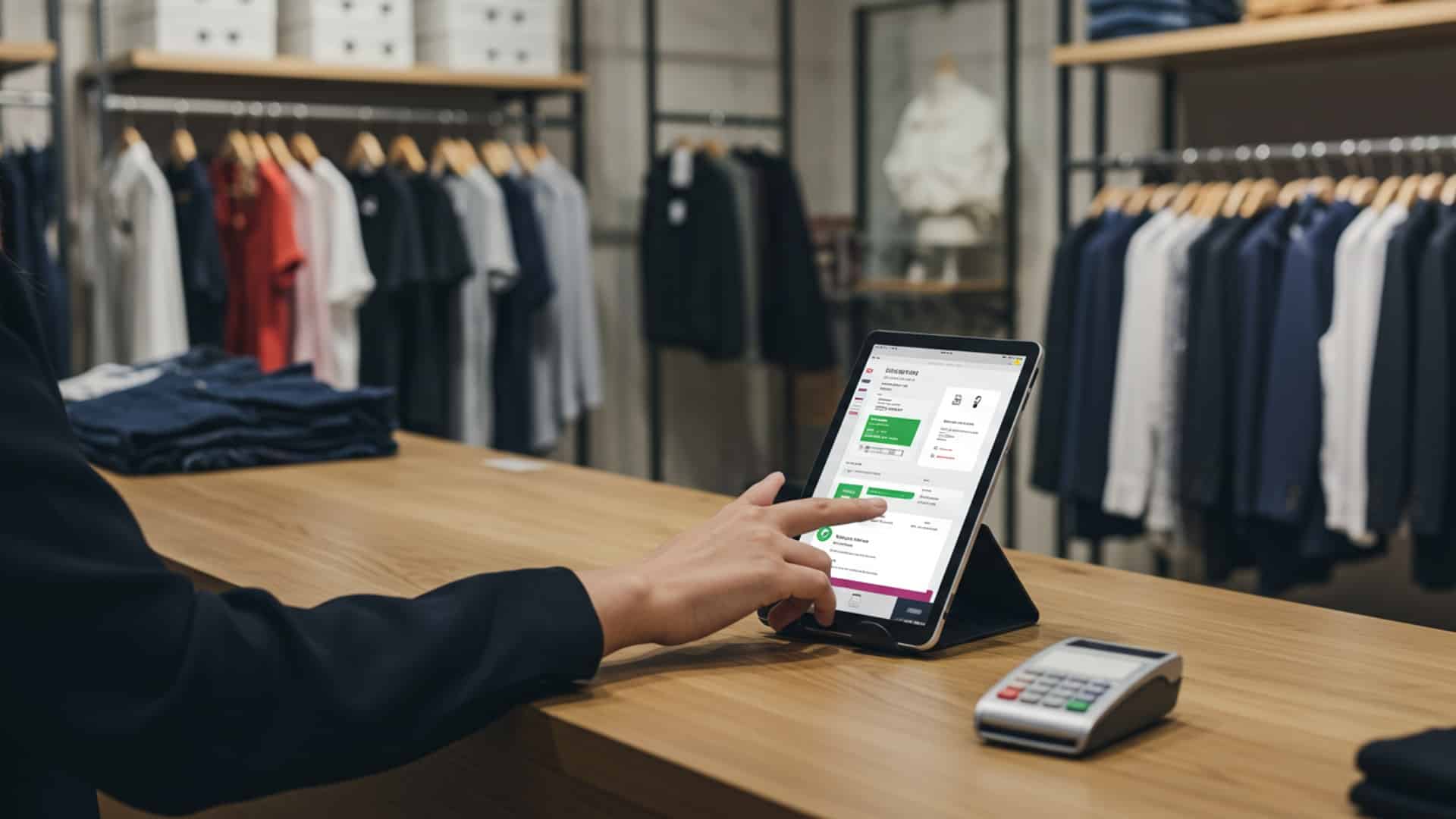
Seamless Inventory Management Integration
For any apparel store, managing inventory is not just about counting items; it’s about understanding what’s selling, what’s sitting. what needs to be reordered. A truly effective apparel store billing software must offer seamless, real-time integration with your inventory management system. This isn’t merely a convenience; it’s a foundational requirement for operational efficiency and profitability.
What is it? Seamless inventory integration means that every sale, return, transfer, or new stock delivery processed through your billing system instantly updates your inventory records. There’s no manual data entry between systems, reducing human error and saving valuable time. For apparel, this is particularly critical due to variations in size, color, style. seasonal trends.
Consider a scenario where a popular dress in a specific size sells out. Without real-time integration, your sales associate might unknowingly promise it to another customer, leading to disappointment. Conversely, if you have an abundance of an unpopular item, an integrated system can flag it for promotional pricing to clear stock. This dynamic interplay is what empowers smart decision-making.
Let’s look at the core benefits:
- Prevents Stockouts and Overstocking
- Reduces Shrinkage
- Enhanced Customer Satisfaction
- Streamlined Operations
By knowing exactly what’s on hand, you can reorder popular items before they run out and avoid tying up capital in slow-moving inventory.
Real-time tracking helps identify discrepancies between physical stock and system records, aiding in loss prevention.
Accurate stock insights means customers are not promised items that aren’t available, leading to a more reliable shopping experience.
Automating inventory updates frees up staff to focus on sales and customer service, rather than manual data reconciliation.
A leading industry expert, Sarah Miller, in her book “Retail Reimagined,” emphasizes that “the backbone of modern retail success lies in the agility of its supply chain, directly fueled by integrated inventory and POS systems.” When evaluating apparel store billing software, always prioritize its ability to handle complex inventory attributes like:
- SKU (Stock Keeping Unit) generation for size-color variants.
- Batch tracking for specific collections.
- Multi-location inventory visibility.
Without this foundational feature, even the most advanced billing functions will operate in a vacuum, leading to inefficiencies and lost opportunities.
Robust Sales and Transaction Processing
At the heart of any apparel store billing software is its ability to process sales transactions efficiently and accurately. This is where the rubber meets the road – the point of sale (POS) experience directly impacts customer satisfaction and your store’s bottom line. A robust system goes beyond merely ringing up sales; it ensures speed, flexibility. reliability in every interaction.
What is it? Robust sales and transaction processing encompasses all aspects of handling customer purchases, returns, exchanges. payment collection. This includes quick item scanning, accurate price application (including discounts and promotions), multiple payment method acceptance. efficient receipt generation.
Imagine a busy Saturday afternoon during a seasonal sale. Lines are long. customers are eager. A clunky, slow billing system can quickly turn excitement into frustration. A high-performing apparel store billing software, But, can process transactions in seconds, keeping lines moving and maintaining a positive shopping atmosphere. This is where the true value of speed and accuracy shines.
Key components of robust transaction processing include:
- Speed and Efficiency
- Multiple Payment Options
- Discount and Promotion Management
- Returns and Exchanges
- Sales Associate Tracking
Rapid barcode scanning, quick item lookup. fast payment processing are non-negotiable.
Support for credit/debit cards, mobile payments (e. g. , Apple Pay, Google Pay), gift cards, store credit. even buy-now-pay-later (BNPL) services.
The ability to easily apply various types of discounts – percentage-based, fixed amount, BOGO (Buy One Get One), loyalty points redemption – often a critical driver of sales in apparel.
Streamlined processes for handling returns, partial returns. exchanges, including inventory adjustments and refund processing.
Attributing sales to specific staff members for commission tracking or performance analysis.
Let’s compare a basic system with a robust one:
| Feature | Basic Billing System | Robust Apparel Store Billing Software |
|---|---|---|
| Transaction Speed | Slow, often manual inputs | Instant barcode scanning, quick lookup |
| Payment Types | Cash, basic cards | All major cards, mobile pay, gift cards, BNPL |
| Discount Handling | Manual calculation, limited options | Automated, flexible promotions (BOGO, loyalty, etc.) |
| Returns/Exchanges | Complex, inventory errors common | Streamlined, instant inventory/refund updates |
| Offline Mode | Usually none, halts sales | Processes sales offline, syncs when connected |
Consider a real-world application: a customer wants to return a shirt purchased last week. With a robust apparel store billing software, the associate can quickly scan the receipt or look up the transaction by customer name, process the return, issue a refund to the original payment method. the inventory automatically updates – all in less than a minute. This level of efficiency not only enhances the customer experience but also minimizes operational headaches for your staff.
Customer Relationship Management (CRM) Capabilities
In the competitive world of apparel retail, simply making a sale isn’t enough; building lasting customer relationships is paramount. This is where integrated Customer Relationship Management (CRM) capabilities within your apparel store billing software become indispensable. It transforms anonymous transactions into personalized interactions, fostering loyalty and repeat business.
What is it? CRM capabilities in a billing system involve collecting, storing. analyzing customer data to better interpret their preferences, purchasing habits. engagement with your brand. This data can then be leveraged to create targeted marketing campaigns, loyalty programs. personalized shopping experiences.
Think about your favorite clothing store. Do they remember your size, your preferred styles, or offer you exclusive discounts on items you’ve shown interest in? This isn’t magic; it’s smart CRM at work. A good apparel store billing software allows you to capture customer insights at the point of sale, such as name, email, phone number, purchase history. even style preferences.
Here’s how robust CRM features elevate your retail game:
- Personalized Marketing
- Loyalty Programs
- Enhanced Customer Service
- Feedback and Engagement
Instead of generic emails, you can send targeted promotions. For example, if a customer frequently buys formal wear, you can notify them about new suit arrivals or accessories.
Easily manage points-based systems, tiered memberships, or exclusive discounts for returning customers. This encourages repeat purchases and fosters a sense of belonging.
When a customer calls or visits, your staff can quickly access their purchase history, making it easier to assist with returns, provide recommendations, or resolve issues.
Use purchase data to follow up with customers, solicit feedback. strengthen your brand community.
For instance, a boutique apparel store used its billing software’s CRM to identify its top 10% of customers. They then launched an exclusive “VIP Club,” offering early access to new collections and a personalized styling session. This initiative, driven by data from their apparel store billing software, led to a 20% increase in average transaction value among VIP members and a significant boost in overall customer retention.
A simple example of how CRM data can be utilized:
// Pseudocode for a targeted email campaign based on purchase history
FUNCTION send_personalized_email(customer_id): customer_data = get_customer_profile(customer_id) purchase_history = get_purchase_history(customer_id) IF "denim" in purchase_history AND customer_data. last_purchase_date > 6_months_ago: email_subject = "New Arrivals: Fresh Denim Styles Just For You!" email_body = "Hi " + customer_data. first_name + ", we noticed you love denim! Check out our latest collection..." send_email(customer_data. email, email_subject, email_body) ELSE IF "dresses" in purchase_history AND customer_data. birth_month == current_month: email_subject = "Happy Birthday, " + customer_data. first_name + "! Here's a treat!" email_body = "Celebrate your special day with 15% off any dress in our store!" send_email(customer_data. email, email_subject, email_body) END IF
END FUNCTION
By leveraging these insights, your apparel store billing software transforms from a mere transaction tool into a powerful relationship-building platform, crucial for long-term success in a crowded market.
Advanced Reporting and Analytics
Data is the new currency in retail. for an apparel store, understanding your sales patterns, inventory performance. customer behavior can mean the difference between thriving and merely surviving. This makes advanced reporting and analytics capabilities a non-negotiable feature for any modern apparel store billing software.
What is it? Advanced reporting and analytics involves the systematic collection, processing. interpretation of sales, inventory. customer data generated by your billing system. It moves beyond basic sales summaries to provide deep insights into trends, performance metrics. opportunities for optimization. It’s about turning raw data into actionable intelligence.
Imagine being able to pinpoint exactly which colors of a particular shirt sold best last season, or which days of the week generate the most revenue, or even which sales associate consistently outperforms others. This level of insight allows you to make data-driven decisions about purchasing, staffing, marketing. store layout.
Key reporting areas that an excellent apparel store billing software should cover include:
- Sales Performance
- Inventory Analysis
- Customer Insights
- Employee Performance
- Promotional Effectiveness
Daily, weekly, monthly. yearly sales totals; sales by product, category, brand. even size/color; average transaction value; sales by payment method.
Best-selling items, slowest-moving items, inventory turnover rate, stock levels, profitability per item. This is critical for apparel to manage seasonal collections.
Top customers by revenue, customer demographics, frequency of purchases, items purchased together.
Sales generated per employee, average transaction value per employee, commission tracking.
Analysis of which discounts or campaigns yielded the best results.
These reports shouldn’t just be raw numbers; they should be presented in intuitive dashboards with visualizations (charts, graphs) that make complex data easy to grasp at a glance. For example, a dashboard might show a line graph of daily sales overlaid with promotional periods, allowing you to visually assess campaign effectiveness.
Consider a real-world application: An apparel store owner noticed a dip in sales on Tuesdays. By pulling reports from their apparel store billing software, they discovered that Tuesdays had consistently low foot traffic and a high number of returns, potentially due to fewer staff members on duty. Armed with this data, they adjusted staffing schedules, introduced a “Tuesday Special” promotion. saw a 15% increase in Tuesday sales within a month. This is a clear example of how data translates into direct, positive business impact.
The ability to export data for further analysis (e. g. , to Excel or BI tools) is also valuable, allowing deeper dives if needed. Some advanced systems might even offer predictive analytics, forecasting future sales based on historical data, which is invaluable for seasonal inventory planning in apparel retail.
Multi-Store and E-commerce Integration
In today’s retail landscape, many apparel businesses operate across multiple physical locations or combine brick-and-mortar stores with an online presence. Managing these disparate sales channels efficiently requires a sophisticated apparel store billing software that offers robust multi-store and e-commerce integration capabilities. Without this, you risk disjointed inventory, inconsistent pricing. a fragmented customer experience.
What is it? Multi-store integration means your billing software can centralize operations for all your physical locations, providing a single view of inventory, sales. customer data across the entire enterprise. E-commerce integration, on the other hand, connects your online store platform (like Shopify, WooCommerce) directly with your in-store billing system, ensuring seamless data flow between your digital and physical storefronts.
Imagine a customer browsing your online store, seeing an item “in stock,” but when they visit your nearest physical store, it’s unavailable. This common frustration arises from disconnected systems. A truly integrated apparel store billing software prevents such issues by synchronizing inventory in real-time across all channels.
Here’s how these integrations are crucial:
- Centralized Inventory Management
- Consistent Pricing and Promotions
- Unified Customer Profiles
- Streamlined Order Fulfillment
- Holistic Reporting
View and manage stock levels across all stores and your e-commerce platform from a single dashboard. This prevents overselling online and helps customers find products in physical stores.
Ensure that prices, discounts. promotions are uniform across all sales channels, eliminating confusion and maintaining brand integrity.
Whether a customer shops online or in-store, their purchase history, loyalty points. preferences are consolidated into one profile, enabling personalized experiences regardless of their shopping channel.
Online orders can be fulfilled from the nearest physical store with available stock, improving shipping times and reducing logistics costs. This is often referred to as “click and collect” or “ship from store.”
Gain a complete picture of your business performance by consolidating sales data from all channels into unified reports, providing deeper insights into overall profitability and customer behavior.
Let’s consider a practical use case: a customer buys a dress online and wants to return it at a physical store. With integrated apparel store billing software, the store associate can easily look up the online transaction, process the return. the inventory (for that specific item) and financial records are automatically updated across both the e-commerce platform and the physical store’s system. This creates a smooth, omnichannel experience for the customer and simplifies operations for the business.
The integration often happens via APIs (Application Programming Interfaces), which allow different software systems to communicate with each other. For example, when an item is sold online, the e-commerce platform sends a message to the apparel store billing software’s inventory module via API, reducing the stock count in real-time.
// Conceptual flow of e-commerce inventory update
// (Assuming a sale happened on the e-commerce platform) FUNCTION e_commerce_sale_event(order_details): item_sku = order_details. item_sku quantity_sold = order_details. quantity // Send update to central inventory management via API api_endpoint = "https://your_billing_software_api. com/update_inventory" payload = { "sku": item_sku, "quantity_change": -quantity_sold, "source": "e-commerce" } response = make_api_request(api_endpoint, payload) IF response. status_code == 200: LOG("Inventory updated successfully for SKU: " + item_sku) ELSE: ERROR_LOG("Failed to update inventory for SKU: " + item_sku + " Error: " + response. error_message) END IF
END FUNCTION
This level of integration is no longer a luxury but a necessity for apparel retailers aiming for growth and a unified brand presence in a multi-channel world.
User-Friendly Interface and Customization Options
Even the most feature-rich apparel store billing software can become a bottleneck if it’s difficult to use or doesn’t adapt to your specific operational needs. A user-friendly interface (UI) and robust customization options are critical for staff efficiency, reduced training time. long-term satisfaction with your system.
What is it? A user-friendly interface refers to the design of the software’s visual elements and interactions, ensuring it’s intuitive, easy to navigate. minimizes cognitive load for the user. Customization options, on the other hand, allow you to tailor the software to fit your unique business processes, rather than forcing your business to adapt to the software.
Consider a new hire on their first day. With an intuitive apparel store billing software, they can quickly grasp how to process sales, returns. look up items with minimal training. Conversely, a complex, clunky system can lead to frustration, errors, slower transaction times. a longer onboarding period, impacting both productivity and customer experience.
I recall working with an older POS system in my early retail days that required memorizing obscure key combinations for common tasks. It was a nightmare for new staff and even experienced employees made frequent mistakes. The contrast with modern, touch-screen intuitive systems is stark – the latter significantly reduced training time and boosted staff morale because they felt more competent and less stressed. This personal anecdote highlights the real-world impact of a well-designed UI.
Key aspects of a user-friendly interface for apparel retail include:
- Intuitive Navigation
- Visual Clarity
- Touch-Screen Optimization
- Quick Search Functionality
- Minimal Clicks
Clear menus, logical workflows for common tasks (e. g. , sale, return, gift card).
Easy-to-read fonts, well-spaced elements. a design that reduces eye strain during long shifts.
Essential for most modern POS setups, allowing quick tapping and swiping.
Fast lookup of products by name, SKU, or barcode.
Streamlined processes that accomplish tasks in the fewest possible steps.
Beyond ease of use, customization options ensure the apparel store billing software truly serves your business:
- Configurable Receipt Layouts
- Custom Fields
- User Roles and Permissions
- Shortcut Keys or Macros
- Integration with Third-Party Apps
Add your logo, store hours, return policy. promotional messages.
Add specific data points for products (e. g. , material composition, care instructions) or customers (e. g. , preferred stylist).
Define what different staff members can access or modify (e. g. , only managers can process refunds or apply certain discounts).
For power users, the ability to set up quick commands for frequent actions.
Flexibility to connect with your preferred accounting software, email marketing platform, or employee scheduling tools.
Before committing to any apparel store billing software, always request a demo and, if possible, a trial period. Get your staff to interact with the system. Their feedback on usability will be invaluable. A system that’s easy to learn and adapt to your unique apparel store operations will save you countless hours and frustrations in the long run, directly contributing to a smoother, more profitable business.
Conclusion
Ultimately, mastering your apparel store’s billing system isn’t merely about processing transactions; it’s about orchestrating an entire symphony of efficiency, accuracy. a superior customer experience. The six crucial features we’ve explored are your blueprint for this success. From my personal observation, many retailers initially focus solely on transaction speed, overlooking the immense power of integrated inventory management or personalized loyalty programs. Yet, in today’s dynamic retail landscape, where online and offline experiences converge, a robust billing software acts as your competitive edge, enabling real-time stock updates and data-driven decisions that truly resonate with modern shoppers. My tip for you is to not just implement these features. to leverage them strategically. Regularly review your software’s performance and consider how new trends like seamless mobile checkout or advanced analytics can further enhance your operations. The goal is to create a frictionless shopping journey that keeps customers returning. Embrace this technological evolution. you won’t just bill better; you’ll build a more resilient and prosperous apparel business ready for tomorrow’s challenges. For more insights on optimizing your retail operations, consider exploring how to choose the right POS software for efficient retail operations.
More Articles
7 Essential Features Guide for Clothing Store POS Software India
How to Choose the Best Offline POS System for Your Indian Clothing Store
Learn How to Choose the Right POS Software for Efficient Retail Operations
How to Easily Set Up and Use Mobile POS Software for Seamless Sales
5 Best POS Features Guide for Ethnic Wear Stores to Boost Sales
FAQs
Why is specialized billing software so essential for an apparel store?
Apparel stores deal with unique challenges like numerous sizes, colors. styles for each item. Generic billing software often can’t handle this complexity efficiently. Specialized software streamlines inventory, speeds up checkout, manages variations easily. provides insights tailored to fashion retail, making your operations smoother and more profitable.
How does good software manage all the different clothing sizes and colors without getting messy?
Top-notch apparel billing software uses a ‘matrix’ or ‘variant’ system. Instead of listing each size and color as a separate item, it groups them under one main product. This makes it super easy to track stock, process sales. manage returns for a single T-shirt style, even if it comes in five sizes and three colors.
Can this kind of software really speed up my checkout process, especially during busy times?
Absolutely! A key feature is a lightning-fast Point of Sale (POS) system. It should allow for quick barcode scanning, easy item lookup, applying discounts instantly. processing various payment types quickly. This minimizes queues and keeps customers happy, even when the store is packed.
What about keeping track of what’s actually in stock? I don’t want to accidentally sell something I don’t have.
Real-time inventory management is crucial. Your software must update stock levels immediately after every sale, return, or new delivery. It should also offer low-stock alerts, helping you reorder popular items before you run out and preventing the frustration of overselling.
Will the software help me grasp my customers better and keep them coming back?
Yes, a strong Customer Relationship Management (CRM) feature is vital. It tracks customer purchase history, contact details. preferences. This allows you to offer personalized promotions, manage loyalty programs. build stronger relationships, encouraging repeat business and customer loyalty.
I need to see how my store is really performing. Does the software give me useful reports?
Definitely! Comprehensive reporting and analytics are non-negotiable. Look for features that provide detailed sales reports, inventory turnover, popular product analysis, staff performance. profit margins. These insights are essential for making informed business decisions and identifying trends.
Is it easy to handle different payment methods with this kind of system?
A robust billing system should support a wide range of payment options seamlessly. This includes cash, all major credit/debit cards, mobile payments, gift cards. even loyalty points. Integrated payment processing makes transactions smoother and reduces errors.

